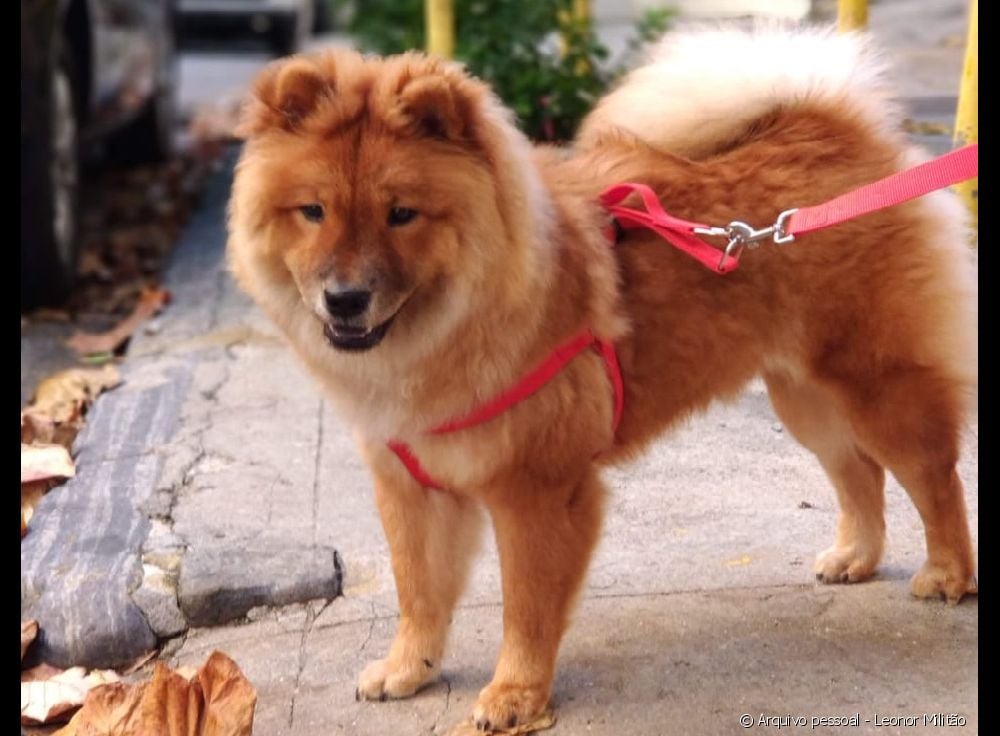Can I walk my dog in heat? Check out 5 tips on what to do during the period

Table of contents
Walking your dog is essential for maintaining health, bonding and expending your pet's energy, but walking with a female dog in heat can be a big challenge for guardians. During this period, the female's smell and urine are able to attract a male dog from afar. So the question always arises: can I walk my dog in heat or should I keep her at home? The truth is that it depends onseveral factors and some care needs to be taken in any situation.
If you live in a house with a backyard, for example, you can use this space to play and spend the energy of the dog in heat. But beware! It is important to ensure that she will not have access to the street and no contact with dogs that may prowl around the house attracted by the smell of the female. The scenario is totally different if you live in a small place or if the dog is used to going out every day to do her job.In this case, you will need to take some precautions during the walk. Understand below the behavior of your dog in heat and see tips on how to make the walk more peaceful and safe.
See_also: Mini breeds: 11 smaller versions of medium and large dogsHow long does a female dog's heat last?
The female dog's heat lasts about 3 weeks, with some variations for less or more time and is composed of several phases. In the first, called proestrus, there will be increased estrogen production and the female may bleed between 7 and 9 days - the males are already attracted to the smell of the dog, but she does not yet accept it. The second phase (estrus) is the ovulation period. The dog will no longer bleed and will alreadySo be extra careful during this period - which can last from 4 to 12 days!
The following phases are diestrus and anestrus: in the former, high levels of progesterone have the function of developing pregnancy, while anestrus is characterized by reproductive inactivity and low hormone production.
Bitch in heat: what care is needed during the walk?
First of all, if you don't expect breeding and puppies at home, the ideal is to neuter your dog. In addition to avoiding the worries of heat, sterilization is a way to prevent several diseases, including cancer. If castration is not in your plans for now, it is necessary to ensure the safety of the dog in heat during walks. Here are some tips:
Be sure to wear a collar and lead
When walking your dog, a collar and leash are important to keep her safe. In the case of a female dog in heat, these accessories are indispensable. You need to have this control to avoid an escape. Remember that your dog will have her hormones, literally, on edge;
Keep your attention
See_also: How much does a dog castration cost? Get all the doubts about procedure values!Attention needs to be paid to walks with a female dog in heat. It is important that you guide the walk and maintain your pet's lead;
Avoid walks in parks and busy places
During the heat period, do not take your dog to parks and places with many dogs. These environments can be stressful for the animal and will also arouse the curiosity of males. In some phases of heat, the dog may become more aggressive, including with other females;
Plan the route and change the time of the tours
If you know that your neighbor will be walking her male dog at a certain time, it is best to avoid meeting her in heat. Look for less busy routes and quieter times, such as early in the morning or in the evening;
Warn guardians not to approach with the dog
You will inevitably come across other dogs during your walk. Keep your dog on a short lead and warn owners not to approach. If possible, go across the street or change your route.

How often does the bitch come into heat?
A female dog's first heat occurs between 6 and 12 months of age and can vary by size and breed - generally, small females start earlier than larger pups. It's normal to have irregularity in the first few cycles, so it's important to have a veterinarian follow up to make sure everything is okay with her, right?! When she reaches normality, the dog starts tocome into heat approximately 6 months apart.
Nala, a 1-year-old chow chow, had her first heat at just 5 months old and her family had no difficulties on the street. "The walks were super quiet. Even though she is large, we didn't have any serious problems - just some strangeness with females, but nothing serious," said tutor Leonor Militão. Nala's heat lasted longer than normal: there were 21 days of bleeding. "We were very happy with her.The first few days, she became quieter and her vulva became very swollen. We took her to the vet to see if it was normal to bleed for a long time and, as it was her first heat, everything was fine".
Is the contraceptive vaccine a valid option?
Some people resort to the contraceptive vaccine to prevent heat and canine pregnancy, but this method is not recommended by veterinarians. The high dose of hormones can be very harmful to your dog's health and also increases her chance of developing pyometra (severe infection in the uterus) and breast cancer. The best solution will always be castration! Be sure to talk to your veterinarian!before any procedure with your dog, it could save his life.

